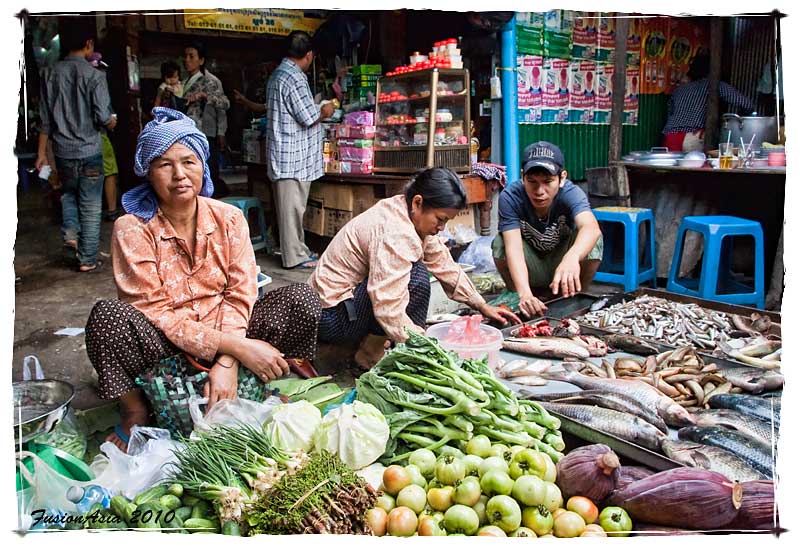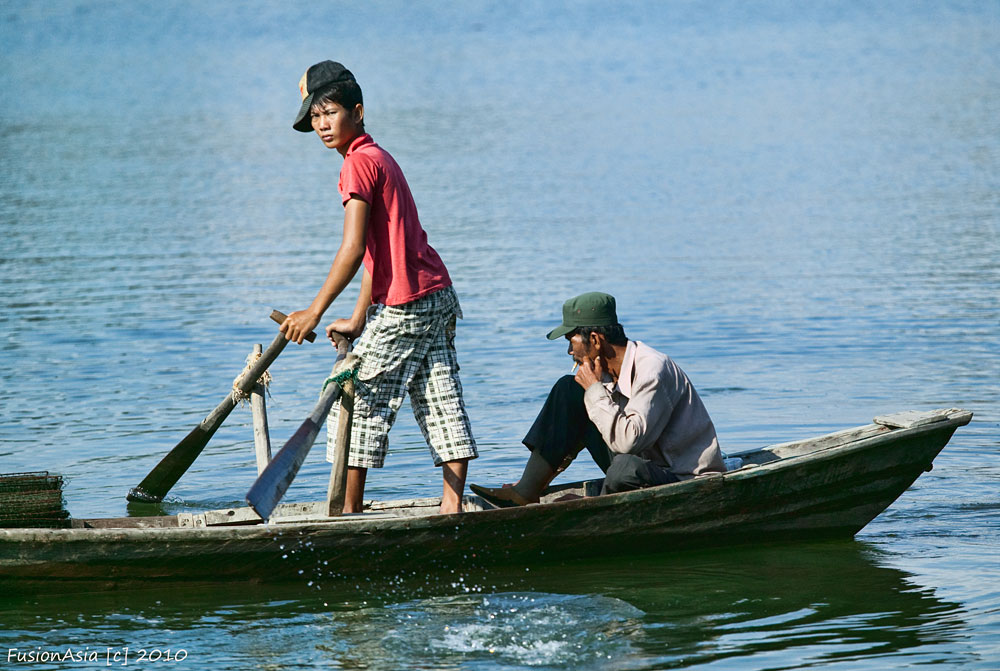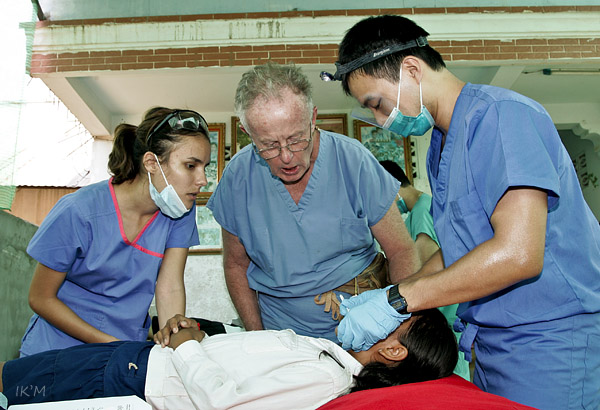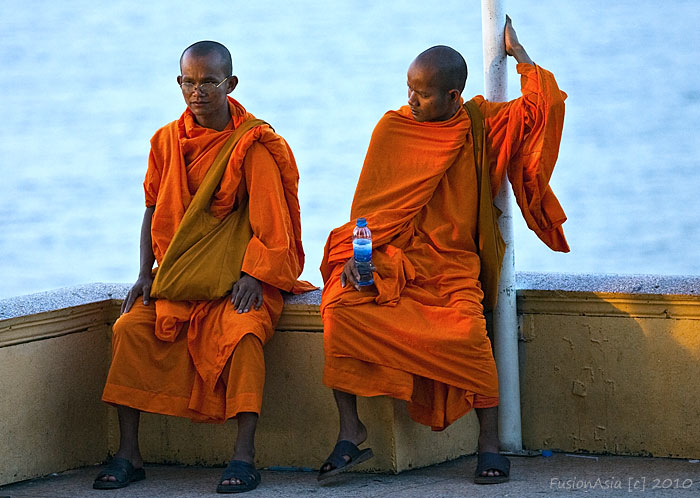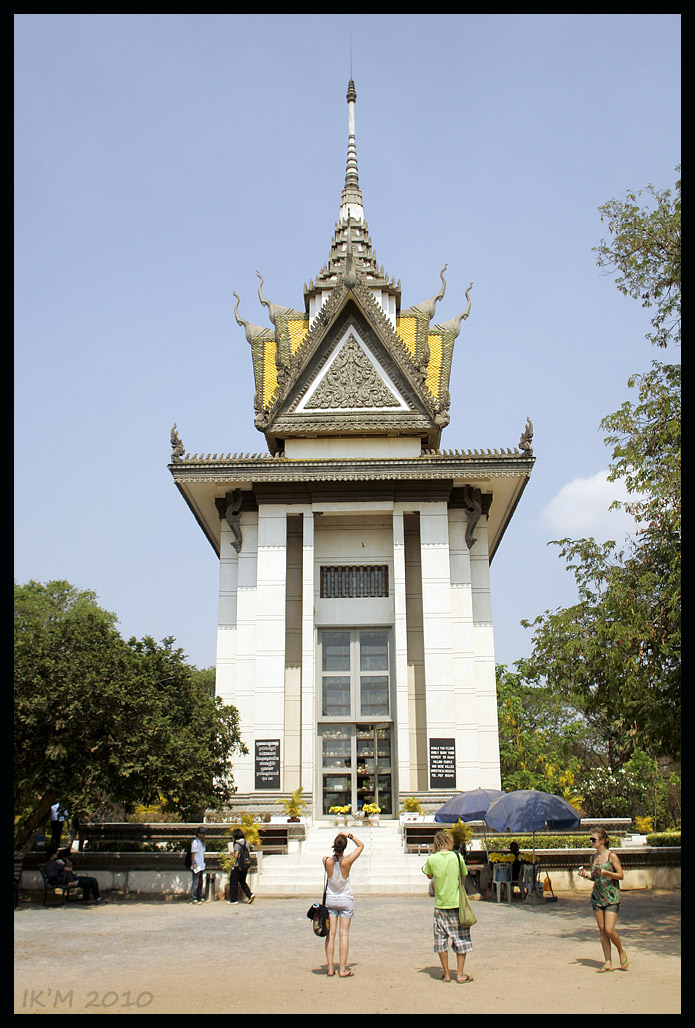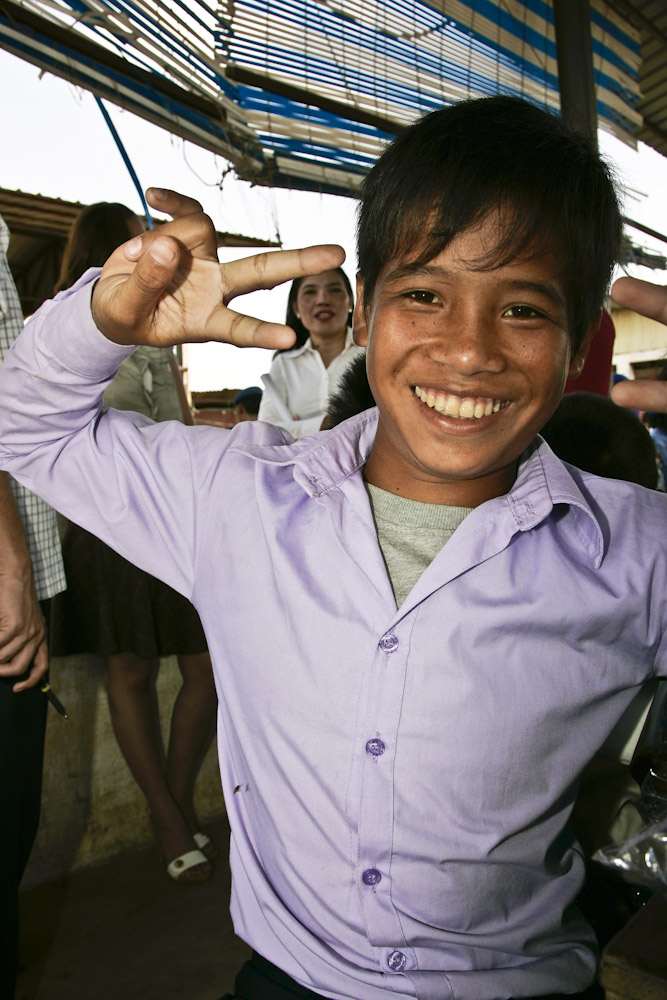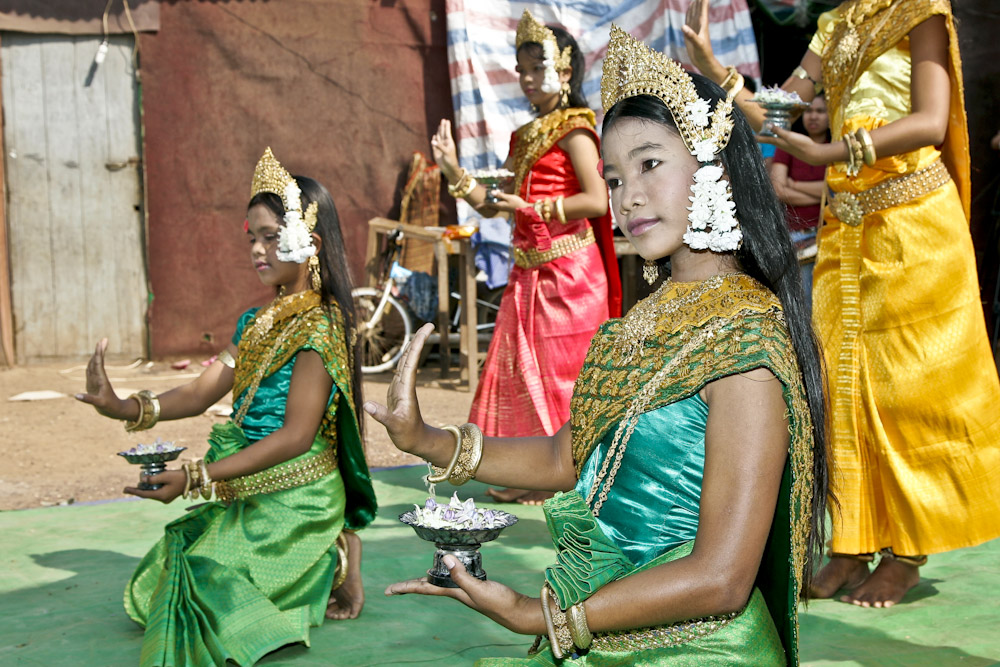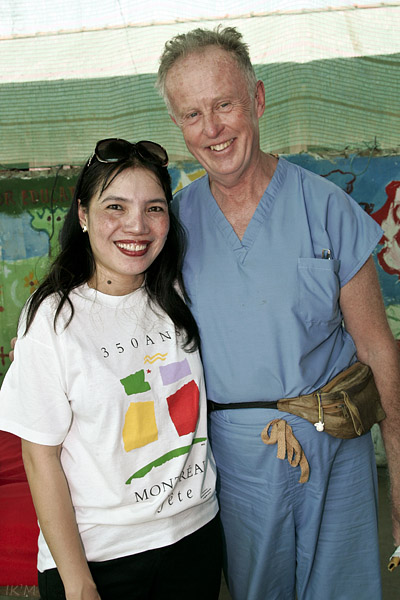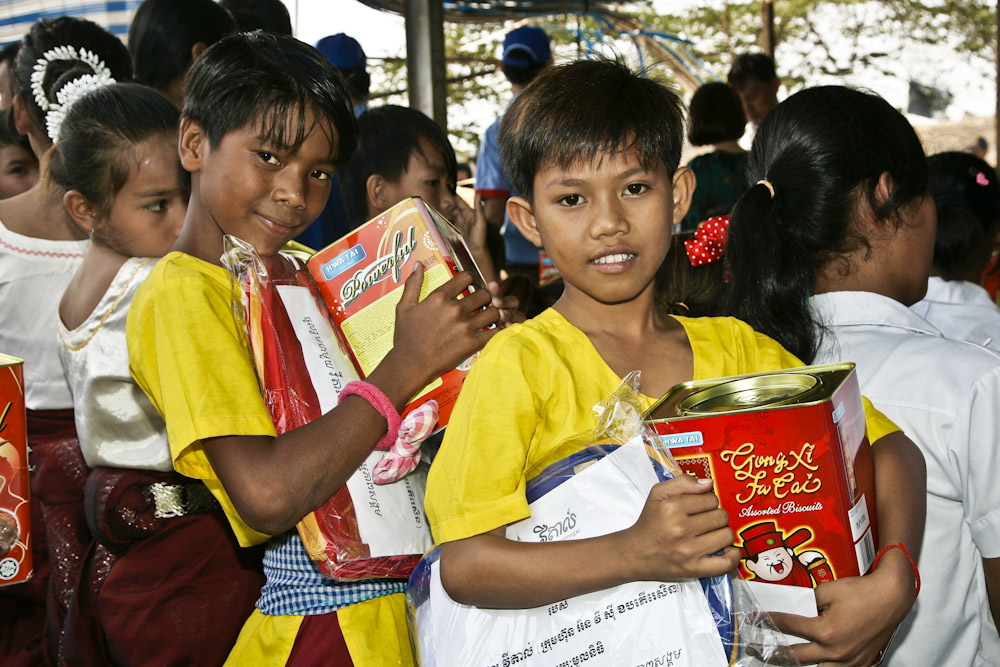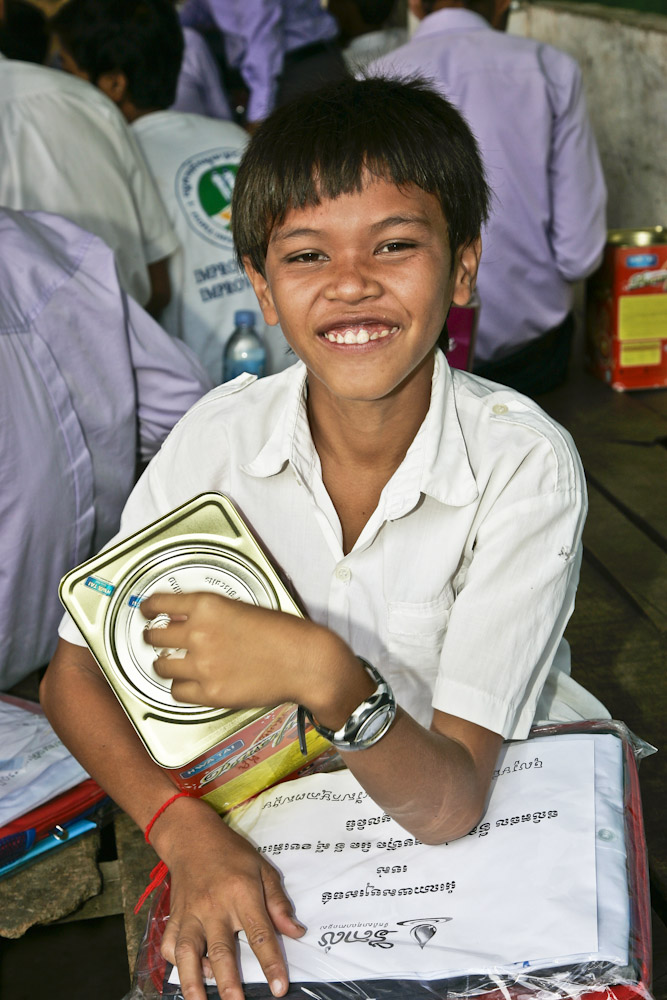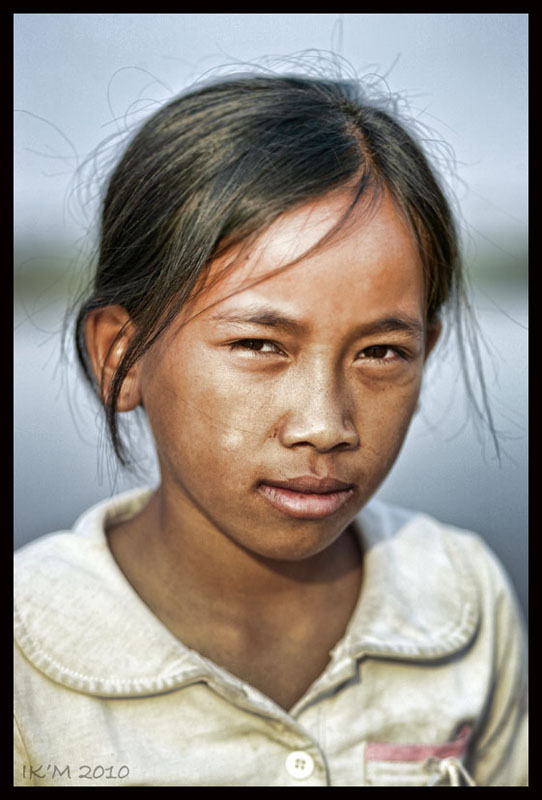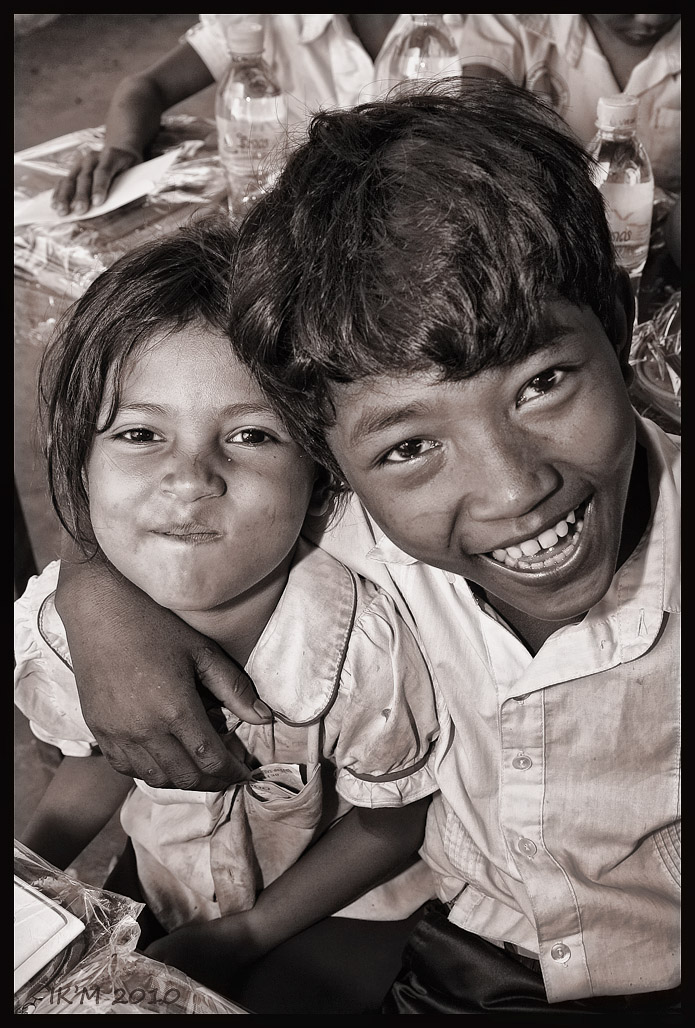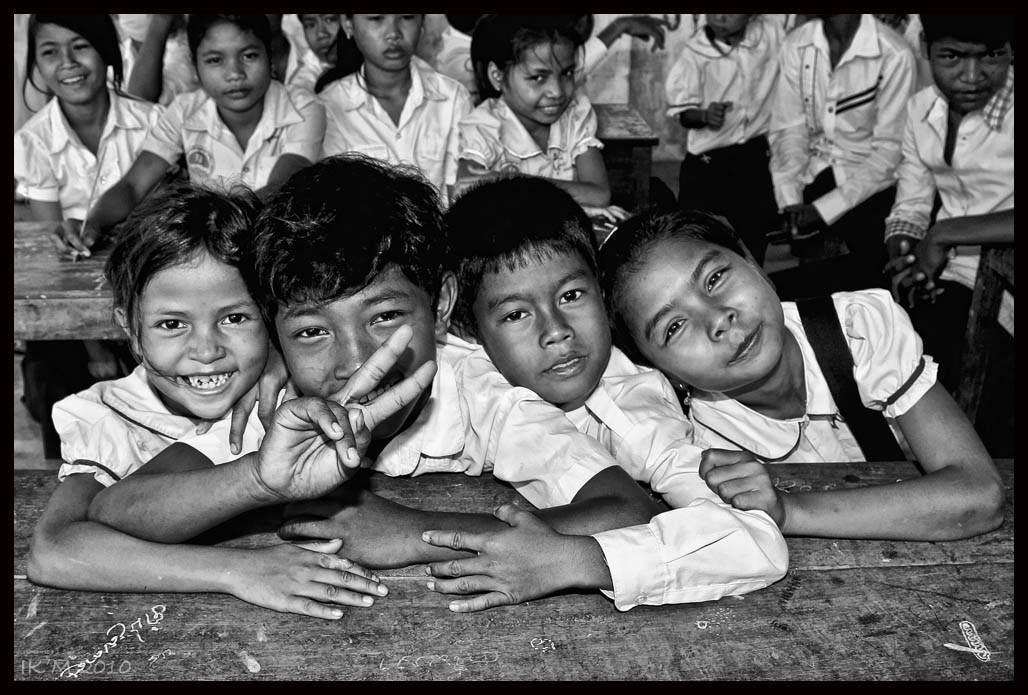The People Improvement Organization was founded by a Khmer woman called Phymean Noun. Seen here with Dr.Bob Renner, the head of a dental team,(KIDS),that visits the Schools once a year.
To understand PIO I think you need to understand Phymean and so the first part of my story is about her and her and the reasons that led her to build the agency.
Phymeans Words. I have had a tough life, when I was 10 years old my parents were separated. I lived with my mother and a few years later she got cancer. She was sick for a few years and in my country we didn’t have good doctors. She preferred to use natural medicine to treat her cancer. She finally passed away when I was 15 years old after a long fight with cancer. I was alone, a 15 year old girl living alone and responsible for my 2 year-old niece. At that time, the rest of my family and cousins were either killed during Pol Pot or had fled for the refugee camps in Thailand. Life for a 15 year old Cambodian girl is very different from a 15 years old Western girl. Girls at 15 in Cambodia are looked as someone who will be married soon and will work their lives to take care of the husband and family. I was different from the other Cambodian girls; I never forgot the most important lesson that my mother taught me… the importance of educational.
I survived my life alone with my niece and worked hard to continue my school, because I knew education is very important for me and my future. If I was not strong during that time, I don’t know what would happen to my life. Maybe I might work in restaurant, a beer girl or karaoke girl or maybe worse. During that time, every night, I lived in fear, worried all the time that some guy will come into my house to steal something or rape me or do something bad. In Cambodia school is not free; the students must pay the teachers a “study fee”. I had to find someway to pay for my school. After my mum died I had to find job to do in the day time and go to school at night. In 1988, I got a job with Ministry of Industry and they sent me to work at the electrical power plant as a secretary. I had to bring my niece every where with me. I would take her to work with me in the day and then to school at night. Every day I finished work at 5:00pm and then go to school at 5:30pm. From my school to my house I rode a bicycle almost 5 Km every day. When I got home from school at 9:00pm I had to cook and feed my niece and then read stories for her until she fell asleep around 11:00pm. Once asleep, I would hand copy stories from books until 12:30 or 1:00am since we had no photocopy machines at that time. They paid me one book (120 pages) about 500 to 600 riels which was about $0.12 USD. Yes that’s right, every night I would write the text from one book to another for people to read. It was the only work available that would let me take care of my niece at the same time and not lose my self-respect.
Many years later, through hard work and determination, I was able to finally live a comfortable life compared to others in my country. I had a good position with an International NGO, I owned my own house and my own car, I had a savings account and could buy what I needed. I had no need to worry about anything anymore.
One afternoon, I was eating my lunch by the riverside. As I was eating a BBQ chicken, a group of street children came up and asked for some money to buy food. I told them to wait and come back when I was finished. When I was done, I threw out the bones and watched in horror as the children immediately ran to grab the leftovers from the garbage. They tried to suck the bones and get every last piece of meat. I called them over and asked them to sit down on the grass with me. I bought them a new chicken and began a conversation that changed my life. I asked them why they were not in school. They answered that they wanted to go but that their parents were too poor to afford it. Some of the kids had 10 siblings. I remembered how hard it was for my life to live without the support of a parent. I knew that there was something I could do for the children who did not have the opportunity to go to school. I dreamed every night about if I can somehow help all those children that want to go to school just like other kids who have their parent’s support. I know how hard it is to grow up without the support of parents. Those children are the future of the country and they can change the world. In 2002, I decided to resign from my job and started an organization to help these children. It is called the People Improvement Organization (PIO).


 The Khmer like things colorful, very colorful. In the evening the place is flooded with balloon sellers, food sellers, photographers that will take your picture and return the prints to you in half an hour. A busy and bustling place, but there's always time for a nap..
The Khmer like things colorful, very colorful. In the evening the place is flooded with balloon sellers, food sellers, photographers that will take your picture and return the prints to you in half an hour. A busy and bustling place, but there's always time for a nap..
